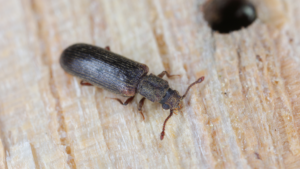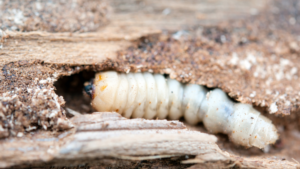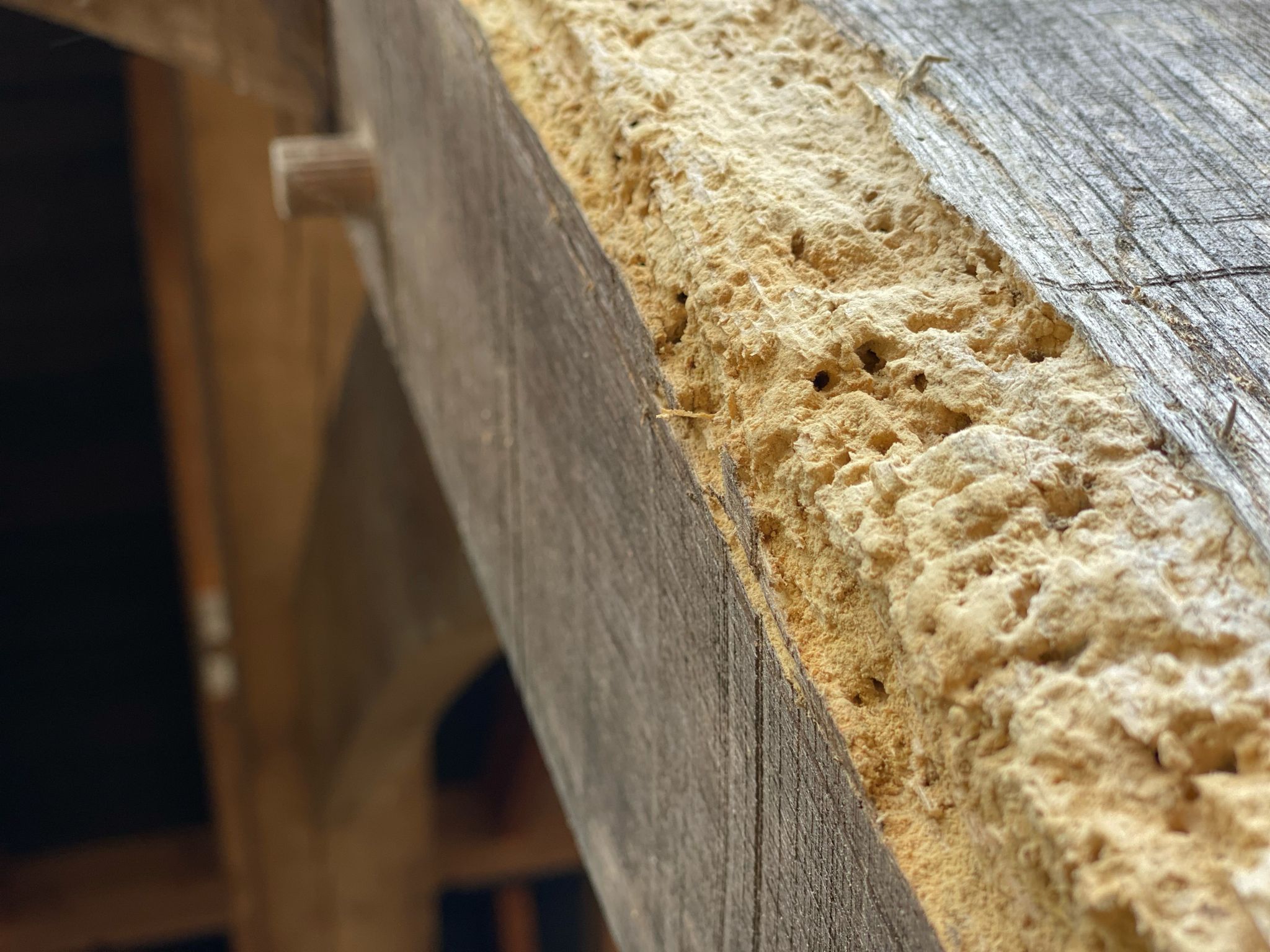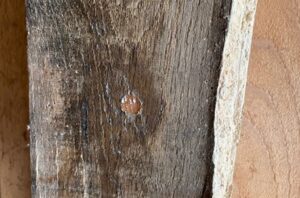As the temperature rises, so the woodworm larvae begin to emerge as fully fledged insects, and behind them they leave a mass of boreholes and frass (dust) on your woodwork. These are often the first signs of a timber infestation, but you may also notice unusual looking beetle/flies buzzing around your windows too.
What kind of wood does wood worm like?
It’s fair to say that most wood boring beetles prefer softer wood or damp wood because it’s simply easier to chew, however the common furniture beetle (the most common woodworm) has been found in both soft and hardwoods.

- Wood with a moisture content of between 12% and 28% is usually favoured so the larvae can pupate easier.
- And wood that has cracks and crevices, such as unprotected weathered wood, or broken wood is easier for the beetles to enter the structure and lays its eggs.
- The inner core of wood, known as ‘heartwood’ is usually safe from infestation but the outer part of wood which is softer (sapwood) could be vulnerable.
Where could I get wood worm in my home?
Wood worm is not one type of beetle but rather a collective term for wood boring insects. The timbers at risk depend on the species and extent of infestation but could range from floorboards and roof rafters to furniture and musical instruments. Not all incidents of woodworm are serious, but if you spot the tell-tale bore holes or frass on the following, you could be at risk of serious structural damage or failure:
- Timber joist in the roof or floor
- Any load-bearing timbers
- Structural timbers
- Garden structures
If you suspect woodworm is present, please ask an expert to assess the extent of the problem and get advice on how to treat it.
How is it treated?
The quick answer is, with insecticide. Treating timber for woodworm is a disruption-free process, beginning with clearing all items from the area to allow access to the affected timbers. Property Conservation Services then spray and insecticide on all timbers, and where necessary inject a dual-purpose insecticide cream into the wood through a small, drilled hole, which is then filled with a dowel.
Is one woodworm treatment enough?
The life cycle of a woodworm begins when the female lays between 20 and 30 eggs in the outer cracks of a timber. After a few weeks the hatching phase begins, and the larvae burrow their way into the wood. This hatching, or tunnelling phase can take up to five years and the larvae can tunnel through large volumes of wood, which is why an infestation can cause extensive damage. Eventually, the final transformation begins and the insect tunnels back towards the surface to complete the pupation into an adult beetle.

The insecticide treatment that PCS uses contains products effective against all the life stages of the woodworm, so one timber treatment is often enough to eradicate the problem, however, since the lifecycle is so long, some larvae may evade the initial treatment.
We recommend you keep a close eye on the treated areas for up to five years, but the insecticide should also prevent re-infestation from returning adults.
If you need advice on treating timber in your home, please get in touch for a conversation or complete the form on the contact us page to request a free survey.


